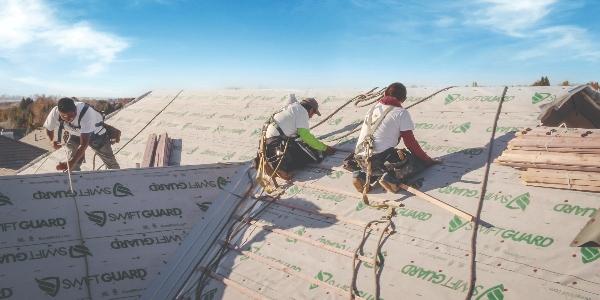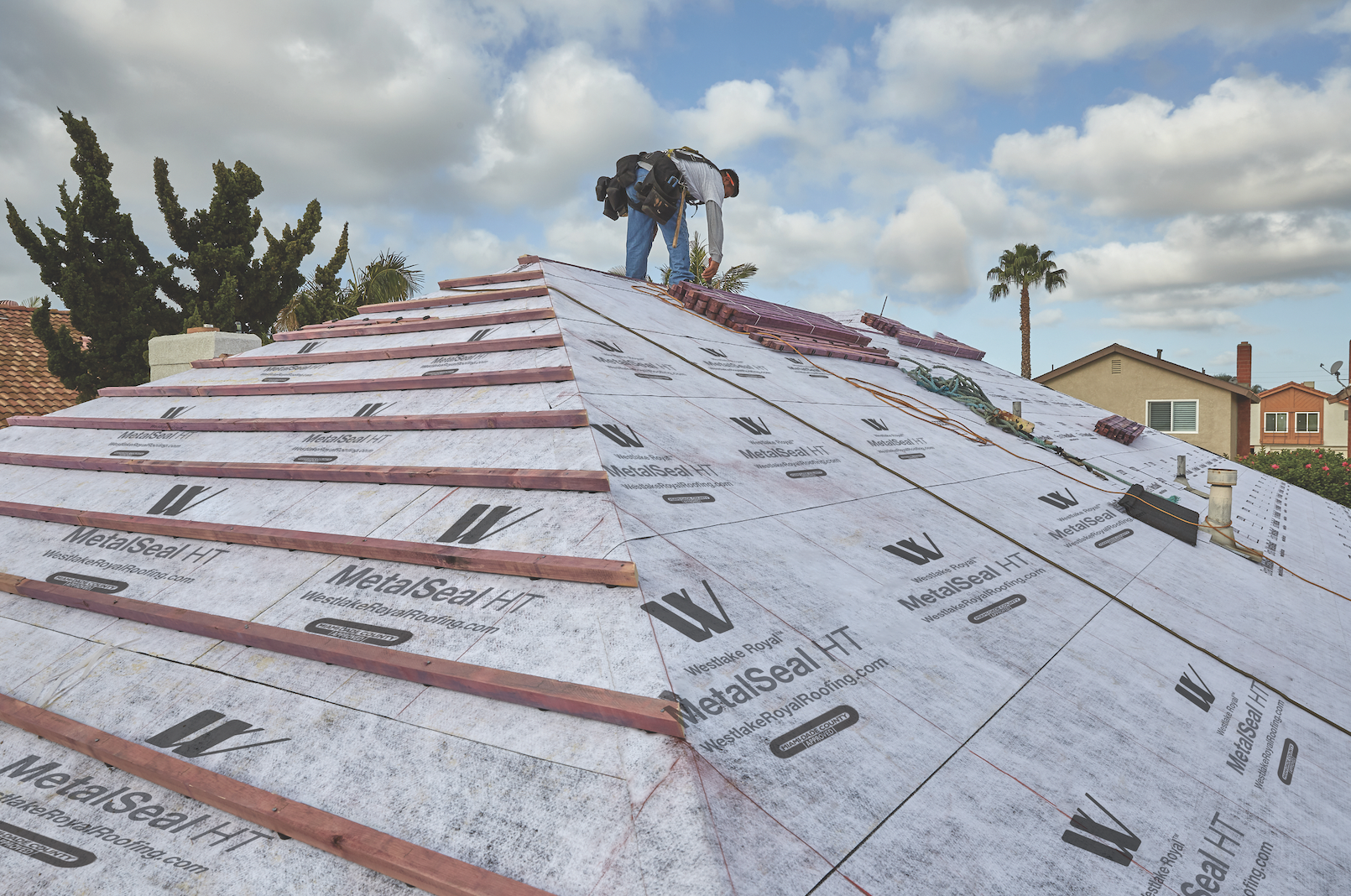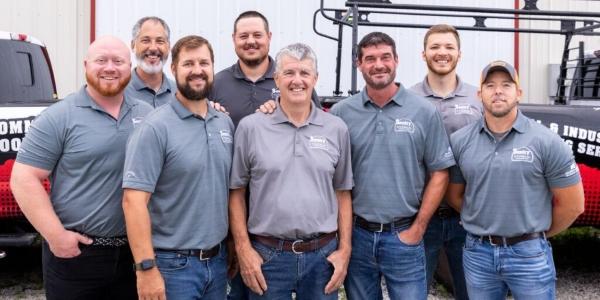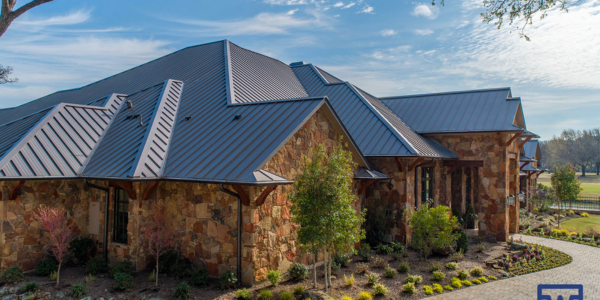Underlayments 101: A guide to all the options

By Doug Thagard, Westlake Royal Roofing Solutions.
Choosing the right underlayment for the roof material and climate is key. Look to the experts for advice when settling on the perfect pair.
The roof is a critical part of the home’s exterior and is often the first point of contact for storms, wind, moisture, UV rays and so much more. The roof material, or the outer layer of the roof system most visible to the eye, is the first defense against these elements, yet it’s not the only portion of the roof with a key protective function. The roof’s underlayment is integral in providing a secondary layer of protection directly on top of the roof deck. It provides a waterproofing layer and can improve energy efficiency. The overall role of the underlayment is to enhance the performance and lifespan of the entire roof system.
There are many types of underlayment. Choosing the right one for your roof material and climate is key. Following is an overview of each Westlake Royal™ Roofing Solutions underlayment option, including its characteristics, performance attributes and which roofing materials it is ideally suited to pair with.
Westlake Royal TileSeal HT and MetalSeal HT: High temperature, self-adhered underlayments
These options are ideal for use in nearly all climates under most roofing materials. The material provides durable protection by bonding to the base sheet or directly to the roof deck. An SBS-modified asphalt core is tested to seal around fastener penetrations and can help eliminate the need for so many nails into the roof sheeting. Premium high temperature underlayment is easy to install and provides an extremely slip resistant surface, making it a preferred choice for metal roofers. The high-strength, polyester surface and SBS-modified asphalt adhesive meets national and Florida building code requirements and is rated to 260 degrees Fahrenheit.
Ideal pairing: Stone Coated Steel Roofing and most roofing materials

Sol-R-Skin™ BLUE: An external insulating underlayment
A complement to steep slope roofing, this underlayment serves as a secondary water protective layer, energy-saving radiant barrier and above deck roof insulation blanket all-in-one. The high-polished aluminum facer with an imbedded scrim lays on top of a blown fiberglass insulation measuring approximately 3/8” in thickness. The underlayment reflects heat with an emissivity rate of 0.03, provides a second layer of heat resistance, has a stand-alone R-value of an R-2.2 and can achieve minimum air-to-air values (when installed with Westlake EBS Battens) of R-6.6 for Unified Steel™ Stone Coated Roofing, and R-5.6 for Newpoint™ Concrete Roof Tile. Sol-R-Skin BLUE incorporates an anti-glare coating in cool blue, making it easier and safer to install than alternative shiny radiant barrier products.
This underlayment passes ASTM-E-108 Class A fire tests, when used with stone coated steel roofing and offers evaluation to: Miami-Dade County NOA, Florida Product Approval, Cal Fire BLM listing, California Bureau of Household Goods and Services listing and ASTM D226 Type II certifications.
Ideal pairing: Stone Coated Steel Roofing, Concrete Roof Tile
Swiftguard®: An engineered synthetic underlayment
This synthetic underlayment is ideal for steep slope roofing installations. Patented nail gasketing technology and four-layer construction helps ensure that the roof system Swiftguard accompanies is better able to withstand the elements in all climates and seasons. Coupled with both UV and thermally stable materials, this underlayment’s nail gasketing technology allows it to be left uncovered and exposed to the elements up to 180 days. High-grip backing and a non-woven thermally embossed fiber face provides increased deck grab and superior walkability. Identifiable lay lines and fastening markers also enable a swift and hassle-free installation. This underlayment meets the physical properties of ASTM D226 Types I and II and are compliant to AC188 and ASTM D1970, Section 7.9.
Ideal pairing: All steep slope roofing materials including Concrete & Clay Roofing Tile and Stone Coated Steel Roofing, as well as natural and composite slates and shakes.
Citadel® Plus: A self-adhered base sheet
The SBS modified asphalt core of this underlayment self-seals around nail or screw penetrations when mechanically fixing roofing. Compared to mechanically fastened base sheets, the sealing that Citadel Plus provides to the roof deck offers moisture resistance and added security against leaks, along with thermal stability. With a peal-and-stick application, it may be installed in high winds and requires no special tools or hot asphalt for hot mopping. The poly-faced surface provides foot traction and maximum adhesion of cap sheets or two-ply systems.
Ideal pairing: A Self-Adhering Premium High-Temp Underlayment or Heavy-Duty Modified Asphalt Reinforced Underlayment with Concrete Roof Tile, Clay Roofing or Stone Coated Steel Roofing.
Westlake Royal Ply 40: An SBS modified, fiberglass reinforced underlayment
This option is an SBS-modified fiberglass reinforced underlayment/base sheet for use with tile, clay, metal shingles, asphalt shingles and shake roof covering products. Offering all season durable protection, it is easily installed and may remain uncovered up to 180 days. The SBS-modified asphalt also is much more UV stable than saturated felt and minimizes the wrinkling and buckling common to non-modified membranes. Westlake Royal Ply 40 meets the physical requirements of ASTM-D226 Type II. Additional certifications include: ASTM-D4601, D6757 and D4869 Type IV.
Ideal pairing: Clay and Concrete Tile Roofing, Shingle and Shake
Westlake Royal ORG-Ply 40™: An SBS modified organic asphalt reinforced underlayment
This underlayment offers durable, all-season protection, notably providing six months of UV resistance if left exposed to the elements. SBS modified asphalt minimizes the wrinkling and buckling associated with non-modified membranes. Certifications and approvals include: ASTM, D226 Type II, D2626 and D4869 Type IV.
Ideal pairing: Clay Tile Roofing, Concrete Roofing Tile, Shingle, Shake.
GatorSeal®: A heavy duty modified asphalt reinforced underlayment
This heavy-duty underlayment is comprised of modified asphalt reinforced with an extra heavy fiberglass mat. It uniformly seals to the roof deck and around nail and fastener penetrations. GatorSeal helps to protect the structure against damage caused by ice dams and wind-driven rain. It is easily installed in cold or warm climates, with no special tools or equipment required. Opaque granules on the surface provide great traction during installation and protect against UV. GatorSeal offers an aggressive bond at low temperatures and is a good choice for critical areas of the roof including valleys, perimeters, eaves, chimneys, walls, dormers and skylights. Additionally, GatorSeal can be installed by-directionally without the need for a salvage edge to form a sealed headlap.
Ideal pairing: All roofing materials
About Doug Thagard
Doug Thagard is a business development manager, roof system components with Westlake Royal Roofing Solutions. Contact Doug at dthagard@westlake.com.
Have a question? AskARoofer.
Find your local roofing contractor in the RoofersCoffeeShop® Contractor Directory.










Comments
Leave a Reply
Have an account? Login to leave a comment!
Sign In